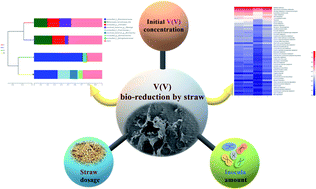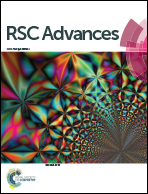Performance and mechanisms for V(v) bio-reduction by straw: key influencing factors
Abstract
A high concentration of vanadium [V(V)] in groundwater is extremely harmful for humans. Weak movability and low toxicity after microbial V(V) reduction have attracted remarkable attention, especially for using solid carbon sources. However, the influencing factors remain unclear. In this study, the initial V(V) concentration, inocula amount and straw dosage were examined to ascertain the mechanisms behind them. Increasing the initial V(V) concentration led to the decrease of the V(V) removal efficiency, which was also positively correlated with the straw dosage within a certain range. The initial sludge amount was not a main factor affecting microbial V(V) removal in this study. With the initial amount of 10 mg L−1 V(V), 25 mL initial inocula and 5 g straw, 88.2% of V(V) was removed. According to the dissolved organic matter (DOM) analysis results, microbial activity prevailed in groups with higher V(V) removal efficiency, indicating that the V(V) bio-reduction was attributed to the microbial activity, which was considered a major factor. Functional species as unclassified_f_Enterobacteriaceae presumably contributed to the V(V) bioreduction, with upregulated ABC transporter genes and enzymes.



 Please wait while we load your content...
Please wait while we load your content...